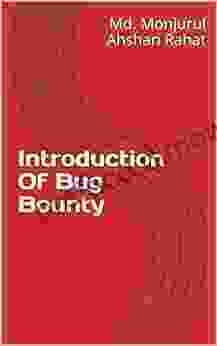Build, Train, and Fine-Tune Deep Neural Network Architectures for NLP with Python

Natural language processing (NLP) is a subfield of artificial intelligence that deals with the understanding of human language. NLP tasks include machine translation, text summarization, question answering, and sentiment analysis. In recent years, deep learning has become the dominant approach to NLP, and deep neural network (DNN) architectures have achieved state-of-the-art results on a wide range of NLP tasks.
4.6 out of 5
| Language | : | English |
| File size | : | 14250 KB |
| Text-to-Speech | : | Enabled |
| Screen Reader | : | Supported |
| Enhanced typesetting | : | Enabled |
| Print length | : | 564 pages |
In this guide, we will show you how to build, train, and fine-tune DNN architectures for NLP tasks using Python. We will cover everything from data preprocessing and model selection to evaluation and deployment.
Data Preprocessing
The first step in any NLP project is to preprocess the data. This involves tasks such as tokenization, stemming, and lemmatization. Tokenization is the process of breaking down text into individual words or tokens. Stemming is the process of reducing words to their root form. Lemmatization is the process of reducing words to their dictionary form.
There are a number of Python libraries that can be used for data preprocessing. Some of the most popular libraries include NLTK, spaCy, and TextBlob.
Model Selection
Once the data has been preprocessed, the next step is to select a DNN architecture for the NLP task at hand. There are a number of different DNN architectures that can be used for NLP, including convolutional neural networks (CNNs),recurrent neural networks (RNNs),and transformers.
The choice of DNN architecture will depend on the specific NLP task. For example, CNNs are often used for tasks that involve image processing, while RNNs are often used for tasks that involve sequential data. Transformers are a relatively new type of DNN architecture that has achieved state-of-the-art results on a wide range of NLP tasks.
Training
Once a DNN architecture has been selected, the next step is to train the model. This involves feeding the model data and adjusting the model's parameters so that it learns to perform the desired task.
There are a number of different training algorithms that can be used to train DNNs. Some of the most popular training algorithms include gradient descent, backpropagation, and Adam.
Fine-Tuning
Once a DNN model has been trained, it can be fine-tuned for a specific NLP task. Fine-tuning involves making small adjustments to the model's parameters so that it performs better on the specific task.
Fine-tuning can be done using a variety of techniques, including transfer learning and hyperparameter optimization.
Evaluation
Once a DNN model has been trained and fine-tuned, it is important to evaluate its performance. This can be done using a variety of metrics, such as accuracy, precision, and recall.
It is important to evaluate the model's performance on a held-out test set. This will ensure that the model is not overfitting to the training data.
Deployment
Once a DNN model has been evaluated and found to be satisfactory, it can be deployed to production. This involves making the model available to end users.
There are a number of different ways to deploy DNN models. Some of the most popular deployment methods include using a cloud-based platform, such as Our Book Library Web Services (AWS) or Google Cloud Platform (GCP),or using a containerization platform, such as Docker or Kubernetes.
In this guide, we have shown you how to build, train, and fine-tune DNN architectures for NLP tasks using Python. We have covered everything from data preprocessing and model selection to evaluation and deployment.
We encourage you to experiment with different DNN architectures and training algorithms to find the best approach for your specific NLP task.
4.6 out of 5
| Language | : | English |
| File size | : | 14250 KB |
| Text-to-Speech | : | Enabled |
| Screen Reader | : | Supported |
| Enhanced typesetting | : | Enabled |
| Print length | : | 564 pages |
Do you want to contribute by writing guest posts on this blog?
Please contact us and send us a resume of previous articles that you have written.
 Book
Book Novel
Novel Page
Page Chapter
Chapter Text
Text Story
Story Genre
Genre Reader
Reader Library
Library Paperback
Paperback E-book
E-book Magazine
Magazine Newspaper
Newspaper Paragraph
Paragraph Sentence
Sentence Bookmark
Bookmark Shelf
Shelf Glossary
Glossary Bibliography
Bibliography Foreword
Foreword Preface
Preface Synopsis
Synopsis Annotation
Annotation Footnote
Footnote Manuscript
Manuscript Scroll
Scroll Codex
Codex Tome
Tome Bestseller
Bestseller Classics
Classics Library card
Library card Narrative
Narrative Biography
Biography Autobiography
Autobiography Memoir
Memoir Reference
Reference Encyclopedia
Encyclopedia Derrick Miller
Derrick Miller Paul Car
Paul Car Nina Sunday
Nina Sunday Diana Ferraro
Diana Ferraro Susan Drummond
Susan Drummond Diana Taylor
Diana Taylor Delo E Mook
Delo E Mook Derrick Smythe
Derrick Smythe Dianna Blake
Dianna Blake Mohamed Bacha
Mohamed Bacha Dennis Mccann
Dennis Mccann Travis Elborough
Travis Elborough Denry Machin
Denry Machin Dena Moes
Dena Moes Jerrold Mundis
Jerrold Mundis Margaret Mcnamara
Margaret Mcnamara Diane Stanley
Diane Stanley Sven Grote
Sven Grote Eliot Epstein
Eliot Epstein Des Hammill
Des Hammill
Light bulbAdvertise smarter! Our strategic ad space ensures maximum exposure. Reserve your spot today!

 Christian BarnesUnraveling the Enigmatic Scramble for the Amazon and the Lost Paradise of...
Christian BarnesUnraveling the Enigmatic Scramble for the Amazon and the Lost Paradise of...
 Federico García LorcaUnleash the Power of Bug Bounty: An Immersive Guide by Md Monjurul Ahshan...
Federico García LorcaUnleash the Power of Bug Bounty: An Immersive Guide by Md Monjurul Ahshan...
 Travis FosterEmbark on an Unforgettable Journey with "Yaakov and the Jewel of Jamaica:...
Travis FosterEmbark on an Unforgettable Journey with "Yaakov and the Jewel of Jamaica:...
 F. Scott FitzgeraldUnveiling the Enchanting World of The Crown of Dalemark Dalemark Quartet
F. Scott FitzgeraldUnveiling the Enchanting World of The Crown of Dalemark Dalemark Quartet Banana YoshimotoFollow ·10.8k
Banana YoshimotoFollow ·10.8k Eddie BellFollow ·15.6k
Eddie BellFollow ·15.6k Lawrence BellFollow ·12.3k
Lawrence BellFollow ·12.3k Carson BlairFollow ·9.7k
Carson BlairFollow ·9.7k Albert CamusFollow ·5.2k
Albert CamusFollow ·5.2k George BellFollow ·4k
George BellFollow ·4k Ernest HemingwayFollow ·15.6k
Ernest HemingwayFollow ·15.6k Eddie PowellFollow ·10.3k
Eddie PowellFollow ·10.3k

 John Steinbeck
John SteinbeckUnveiling the Return of the Antichrist and the New World...
As darkness descends upon the...

 Kenzaburō Ōe
Kenzaburō ŌeEmbark on an Unforgettable Journey: "Something Lost...
Prepare to be captivated as you...

 Hunter Mitchell
Hunter Mitchell"The Penguin Who Knew Too Much": A Captivating Mystery on...
Prepare yourself for an...

 Jack Powell
Jack PowellMaster the Art of Staying Present and Profitable in the...
In the relentless...

 Pete Blair
Pete BlairEscape into a Tropical Paradise with "Toucan Keep Secret"
Immerse Yourself in the Vibrant World of a...
4.6 out of 5
| Language | : | English |
| File size | : | 14250 KB |
| Text-to-Speech | : | Enabled |
| Screen Reader | : | Supported |
| Enhanced typesetting | : | Enabled |
| Print length | : | 564 pages |






